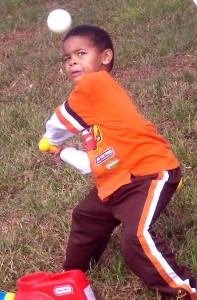 In my seventh child, I finally get to experience the attributes of what I prefer to call the dynamo personality (see the book, Dreamers, Discoverers & Dynamos, by Lucy Jo Palladino). In the common world, it’s typically referred to as ADHD, with hyperactivity. Yes, he has high energy, but the label ADHD tends to carry a negative connotation with it. With high energy comes good things, and hard things, as I say about every attribute.
In my seventh child, I finally get to experience the attributes of what I prefer to call the dynamo personality (see the book, Dreamers, Discoverers & Dynamos, by Lucy Jo Palladino). In the common world, it’s typically referred to as ADHD, with hyperactivity. Yes, he has high energy, but the label ADHD tends to carry a negative connotation with it. With high energy comes good things, and hard things, as I say about every attribute.
These children are also typically right-brained, but in a very different way than a discoverer type of right-brained learner (like my builder son), or a dreamer type of right-brained learner (like my artist son). Besides high energy, another attribute that often comes with a dynamo is being a risk taker. Between their high energy and risk-taking (adventurous) spirit comes a need to feel deeply. They thrive off the energy that comes with intensity. When young and with inexperienced emotional intelligence, these children often fulfill their need for intensity by pushing back or stirring things up. It’s imperative they have emotion coaching (see the book Kids, Parents & Power Struggles, by Mary Sheedy Kurcinka).
Well-Matched Social Settings
One of the first things I learned was that he needed to be in well-matched social settings. This meant that both the children and the activities had to be active. If I found ourselves in a social setting that wasn’t a match (reserved children or indoor quieter activities), I HAD to be his shadow. I had to consistently do this until he was at least 8 to 9 years old. Before 8, it was near constant. While other mothers got to circle up and chitchat, my priority had to be the social success and emotion coaching of my high energy, high intensity son. One time I didn’t, and we were asked not to return. Yep.
I also found it interesting when he would be with the wrong fit children versus the right fit children. When it was a wrong fit, I might look on and think, “What is seriously wrong with my child!?” Yet, the next week, with the right fit children, I would smile gleefully at how amazing he is. Some personalities can blend in with many situations and children, and some can’t. And yet, as he continued to gain competent emotional intelligence, he is quite gifted with people. Well, frankly, even when he didn’t use this strength well, he was quite gifted at it. For example, during a brief stint in a private kindergarten, he would choose to fill his boredom with his ability to behaviorally manipulate his teacher, and then the principal that he purposely managed to get sent to as another interesting game. I brought him home. Completely delightful child…when he chose to be. And could run around circles with people when he was bored and needed an intensity boost.
Well-Matched Activities
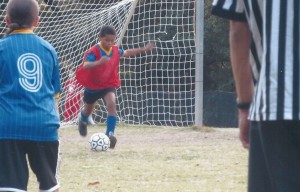 Sports is typically a great outlet for these children. My youngest son was no different. We started the YMCA sports as soon as they started at 5, I think it was. Soccer. T-Ball. Basketball. Anything we could find. At 8, we started karate and swim team. At 11, it was horses. He spent a great deal of time outdoors as well. He was my first Daddy’s boy and followed him around doing yard work and learning to use power tools starting around 8 years old. Climbing trees. Riding bikes. Exploring creeks. That was the staple of childhood for him.
Sports is typically a great outlet for these children. My youngest son was no different. We started the YMCA sports as soon as they started at 5, I think it was. Soccer. T-Ball. Basketball. Anything we could find. At 8, we started karate and swim team. At 11, it was horses. He spent a great deal of time outdoors as well. He was my first Daddy’s boy and followed him around doing yard work and learning to use power tools starting around 8 years old. Climbing trees. Riding bikes. Exploring creeks. That was the staple of childhood for him.
Well-Matched Learning Environment
From my book, The Right Side of Normal, I write:
I explain in this book that a right-brained child is developing his foundational traits that rest in the creative outlets. I find the dynamo/ extrovert child is developing the risk-taking attributes as well. These are the traits that will serve him well in the particular career fields that may be pursued. As mentioned in Chapter Four, a parent or educator will notice a shift that begins in the 8 to 10 year time frame. I noticed this about my high energy son. After having the space to grow into himself, I found that at around 8 to 9 years old, he was better able to sit at a desk from time to time and start exercising his mental capacities now that his physical needs were well satiated. Further, at around 10 years old, I began to notice his growing emotional maturity. He may also become focused in his active needs, such as organized sports, and take more notice of other focused creative outlets, such as developing a musical talent. My active son progressed in this way starting near the 8 year side of the time frame with soccer, swim team, karate, and basketball. He initiated learning music and a foreign language at the 10 year end of the time frame. The right-brained time frame differences are even more important to understand when a child shows these types of differences, such as having more energy, to create his optimal learning environment.
In my Collaborative Learning Process, I talk about the 8 to 10 year time frame as being a time I begin “short teaching moments.” My youngest was much more ready for some beginning paper and pencil work (mainly focused on reading, handwriting and math) at this stage. In the 5 to 7 year time frame, I did more 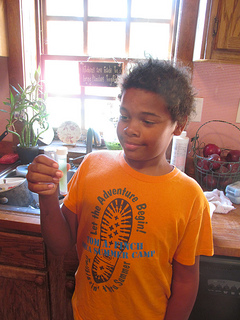 creative or large motor activities with him. As he’s hit the 11 to 13 year time frame, I have much more gap filling to do with him because he wasn’t naturally focused on print, but active, outdoor things. By waiting for his high energy needs to be satiated and his outdoor/risk-taking gifts to fill his foundation, he can more easily progress through formal academics. That said, the greatest difference for him has been his later reading. His birth father, whom he is very much like, learned to read around 13 to 14 years old. My son may follow that time frame. He is at an early stage reader, but not a proficient one yet at 11.
creative or large motor activities with him. As he’s hit the 11 to 13 year time frame, I have much more gap filling to do with him because he wasn’t naturally focused on print, but active, outdoor things. By waiting for his high energy needs to be satiated and his outdoor/risk-taking gifts to fill his foundation, he can more easily progress through formal academics. That said, the greatest difference for him has been his later reading. His birth father, whom he is very much like, learned to read around 13 to 14 years old. My son may follow that time frame. He is at an early stage reader, but not a proficient one yet at 11.
One of the attributes I’ve had to figure out most with this son is his need to “push back” with everything, including his formal work. This appears to be his standard coping strategy. I was finally able to figure out that he had transition issues between down time and work time, so as I observed his own leanings, I realized he always did better when he asked to get a snack or lunch or drink item 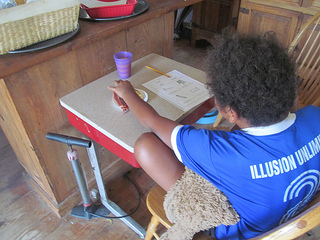 as he began. Why that didn’t register sooner, I don’t know, but I told him that I would be preparing a special breakfast for him each morning to start off his homeschool time, and his transitions have been almost seamless. If I stop being creative, though, he can go back to his standard push-back/avoidance tactics. But, from experience with my other children, as 13 nears closer, I have confidence that if I continue to nurture the better transition strategy, he will initiate adopting it for himself, along with other similar ideas.
as he began. Why that didn’t register sooner, I don’t know, but I told him that I would be preparing a special breakfast for him each morning to start off his homeschool time, and his transitions have been almost seamless. If I stop being creative, though, he can go back to his standard push-back/avoidance tactics. But, from experience with my other children, as 13 nears closer, I have confidence that if I continue to nurture the better transition strategy, he will initiate adopting it for himself, along with other similar ideas.
Although in his own time and outside the home activities he can access the emotional intelligence he’s developed about 75% of the time competently on his own, I still find that I get a lot of push back from him when I request things from him throughout the day. I decided to pick back up the book, Kids, Parents & Power Struggles I mentioned earlier that had been so helpful to me when he was younger. Reinstituting those emotion coaching strategies I feel will help squeeze out the less desirable push back strategy with more collaborative ones. In two days, it’s already proven highly effective. He’s at the stage that he can really bring it all home if I bring in the right supports and facilitation. If you want to join us in a “book club” discussion as we read through the book together, come join our Facebook group here.
Question: What are some of the gifts and challenges as you parent a dynamo child?

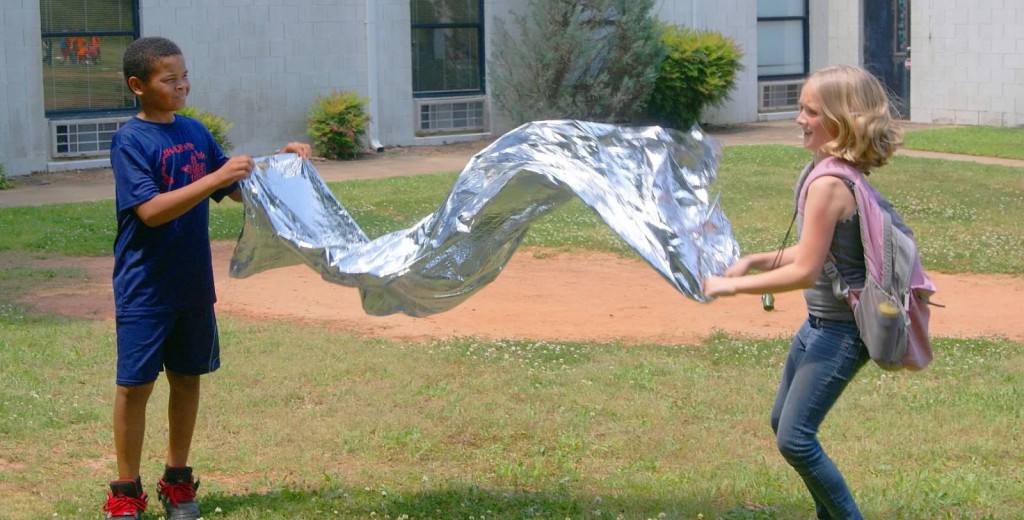





3 responses to “The ADHD Push-Back”